
views
Using your Diaphragm for Breathing
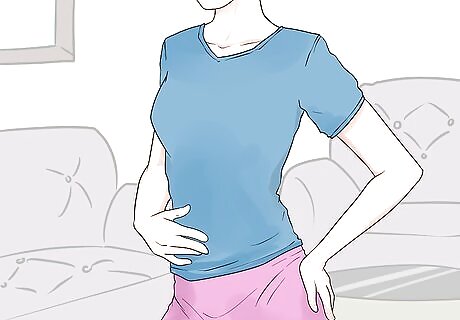
Place one hand on your lower back and one on your abdomen. Before you even begin to sing or practice breathing, place your hands on your back and abdomen, near waist-level. This will help you feel your body’s movement as you inhale and exhale deeply. You will feel your body expand as you breathe in and contract as you breathe out.
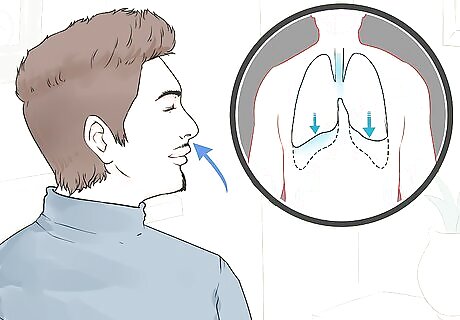
Inhale by filling your lower lungs with air. As you inhale with a deep breath, visualize yourself filling the lower portion of your lungs with air. This will feel different from your normal breathing because our relaxed, daily breathing is usually quite shallow. As you breathe in, your hands on your back and abdoment should move outward. It may help to visualize yourself filling your stomach with air, as it if is a balloon.
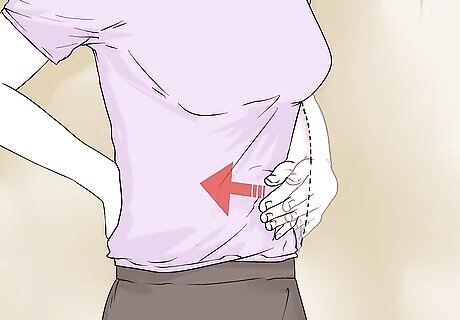
Exhale by allowing your stomach to contract. As you exhale, try to exhale all of the air in your lungs, so that the next time you inhale, you will be starting with all new air. Imagine that your stomach is a balloon and you are deflating it. Your abdomen will contract at this point, moving your hands inward.

Do not move your chest. As you breathe, do not allow your chest to move. Your chest and shoulders normally move up and down in your daily breathing, but when you are singing, you will want to always breathe from the deepest part of your lungs. When you are breathing from the lower part of your lungs (your diaphragm), your chest should very little, if at all. Focus on breathing horizontally, rather than vertically. Breathing horizontally means that your diaphragm and abdoment should move outward instead of the usual up-and-down movement that accompanies shallower breathing.
Strengthening Your Diaphragm
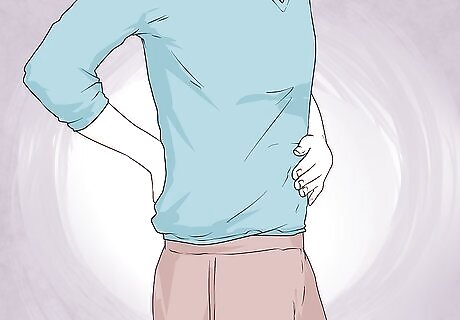
Place one hand on your abdomen and the other on your back. You will place your hands near waist level. This will allow you to feel how your body moves as you inhale and exhale.
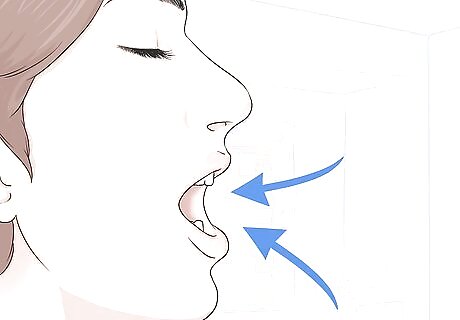
Inhale forcefully. As you inhale through your mouth, visualize the air moving into your diaphragm, the muscles below your lungs that help you to inhale and exhale. Your hands should move outward as you fill your lower lungs with air.

Exhale forcefully. Use your stomach muscles and diaphragm to force the air rapidly and with force. Exhale through your mouth. You will feel your hands moving inward as your diaphragm contracts.
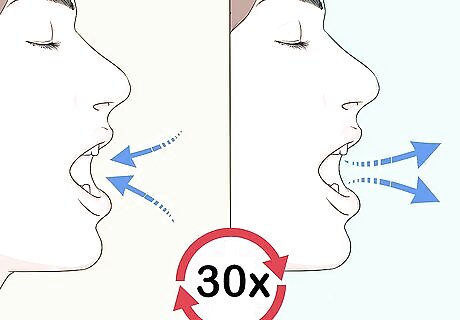
Repeat thirty times. As you do this, visualize yourself breathing horizontally, rather than vertically. Your abdomen will expand and contract horizontally as you do so. Start out slowly and then pick up the tempo as you continue. If you find yourself slipping into breathing with your chest, stop and start over, breathing slowly again. Repeat this exercise once or twice daily.
Using Visualization for Effective Breathing
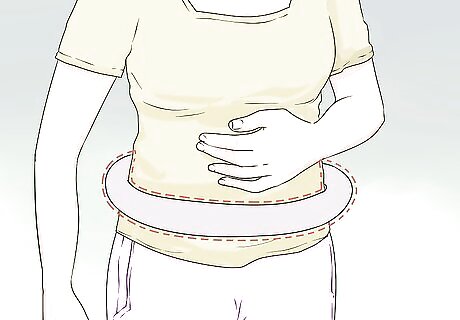
Imagine there is a rubber ring around your waist. The key to effective breathing for singing is in the breath. The most important aspect of breathing is breathing with your diaphragm, the muscles underneath your lungs that help them to move air in and out. A great way to visualize breathing with your diaphragm is to picture a rubber ring around your waist. This ring will move in and out, getting bigger and smaller, with each inhale and exhale.
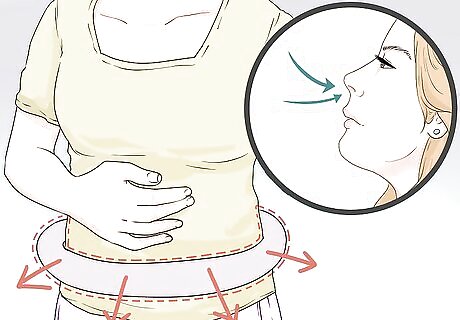
Breathe in and attempt to push the ring outward. As you inhale through your nose, visualize the ring around your waist getting bigger and expanding horizontally. Your stomach should protrude as you inhale this way.
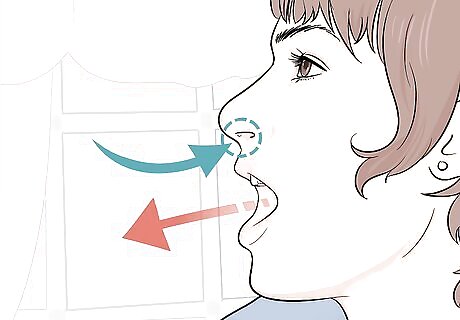
Breathe in through your nose and out through your mouth. As you exhale, attempt to make the ring contract and become smaller. This visualization should help you to breathe with your diaphragm, thus improving your singing. Breathing through your nose ensures better breath control and helps you to breathe in more slowly, allowing you to focus on how you are breathing, rather than how much air you are sucking in.
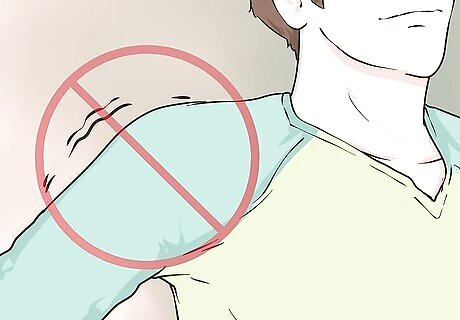
Avoid tension in the shoulders. It is common to hunch your shoulders as you breathe. Sometimes tension creeps up on us. Another important aspect of singing is to relax our muscles. This will allow them to move properly. If you feel tension in your shoulders, remind yourself to relax. Visualize your neck getting longer and the tension melting away from your shoulders and into the ground. It can also help to take a few long, deep, slow breaths to relax and stabilize your mind and body.
Utilizing Breathing Exercises
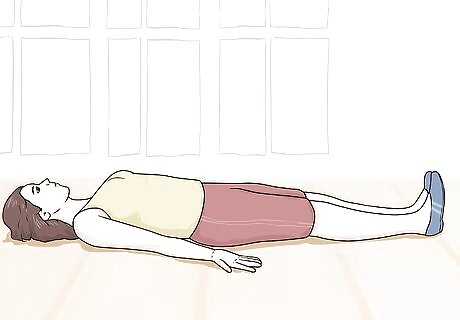
Lay flat on your back. Find a flat surface where you will be able to comfortably lay down and stretch out. If you have trouble laying flat on a hard surface, try a carpeted surface or your bed. Use a pillow to support your neck, back, or knees, wherever you feel you need support.
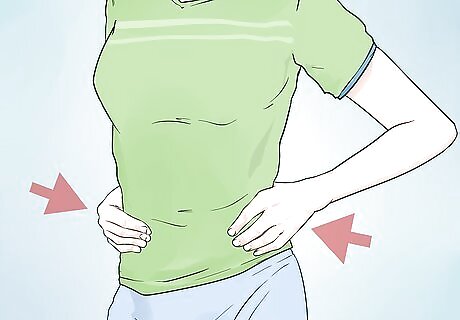
Place your hands on your waist. You will place your hands on either side of your belly button. Your fingers will point toward your belly button.
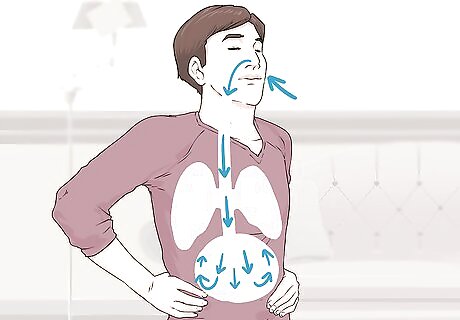
Fill your stomach from the bottom to the top as you inhale. Do not aim to fill yourself until you feel like you are bursting; rather, inhale just enough air to feel the difference between shallow breathing with your chest and deep breathing with your diaphragm. During the inhale, you will feel your hands raise up and outward as they rest gently on your belly. As you breathe in, fill your abdomen from the bottom to the top, noticing your stomach rising first, then your chest. You should not only feel your body expanding at the front, where your hands are, but also at the sides and back. Even when breathing diaphragmatically, expanding the side and back ribs is crucial for maximum air volume. To get a feeling for this, either wrap a resistance band around your rib cage or practice inhaling after your air has been tightly squeezed out.
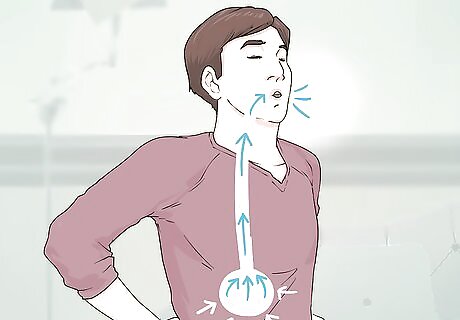
Breathe out to a count of five. Gently exhale and slowly count to five. Do not worry about getting all of the air out of your lungs. You will simply notice your stomach area contract, starting with your stomach and ending with your chest. Learn how to keep your ribcage up and expanded to control the airflow, and try exercises such as the “ssss” hold out in order to learn how to control your air. If you learn to control your air, you will soon be able to exhale for a count of 20 or more.
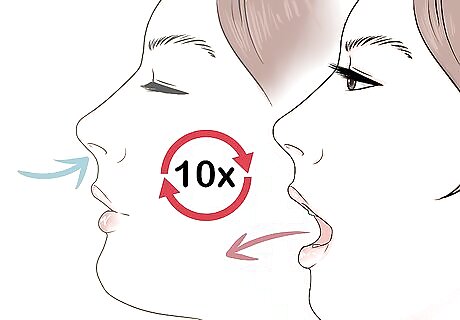
Repeat ten times. Whenever you do this breathing exercise, repeat it ten times. Practice it daily, once before you get up in the morning and once before you go to sleep at night.


















Comments
0 comment